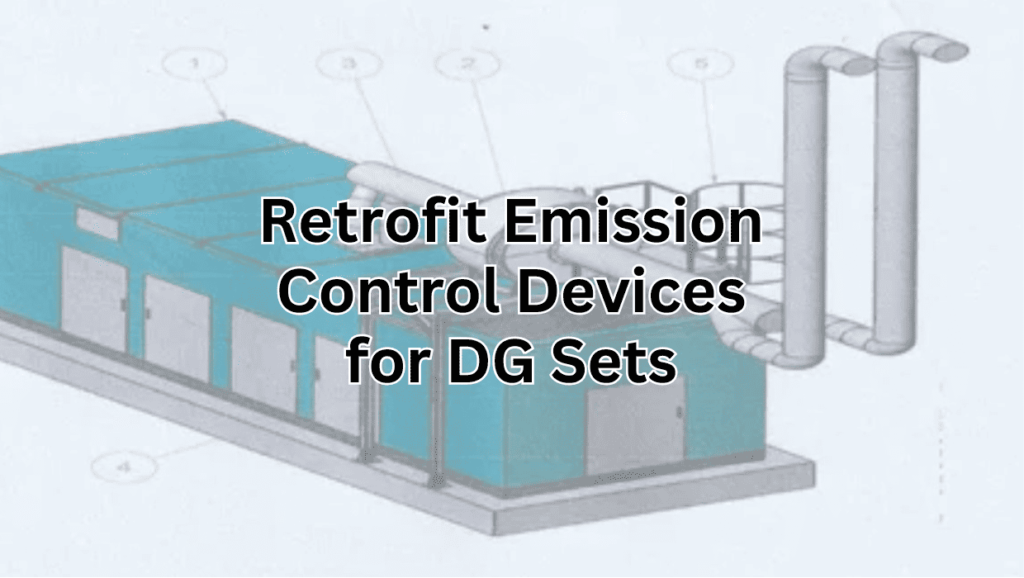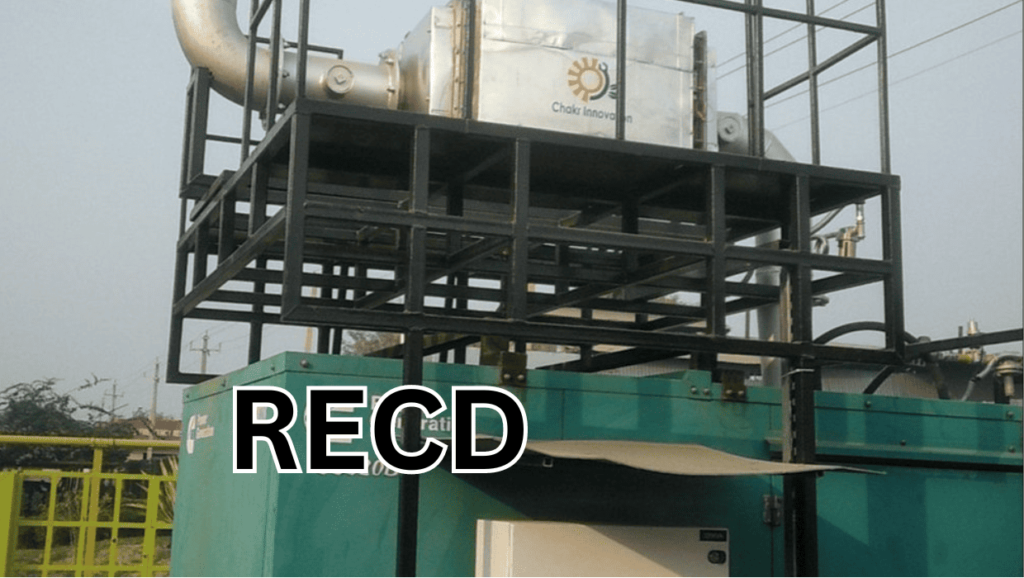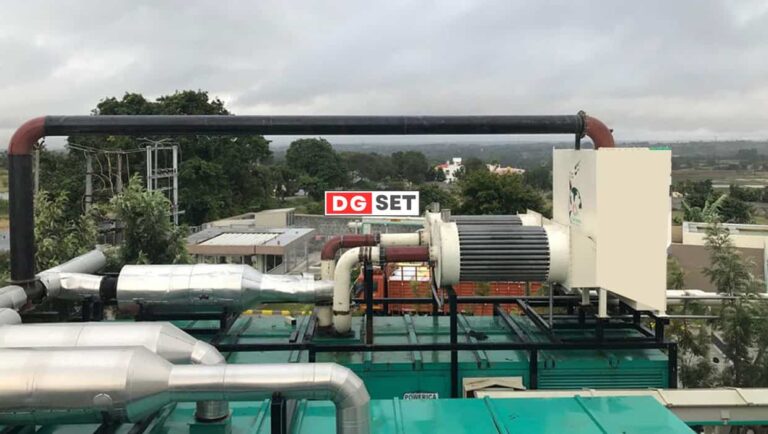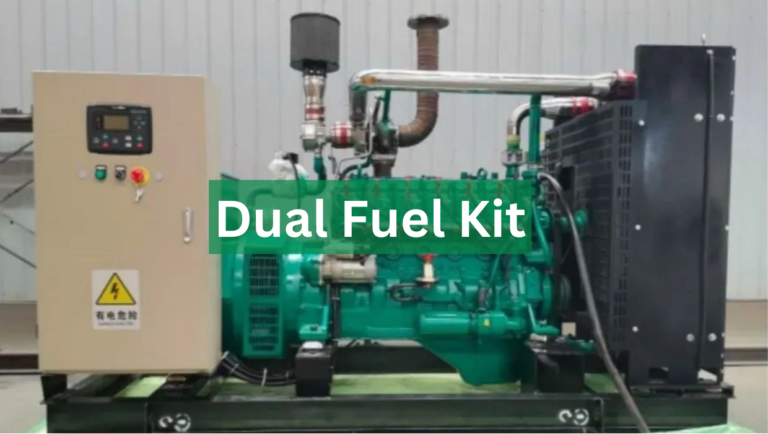Understanding Retrofitted Emission Control Equipment for DG Sets

In today's rapidly evolving world, the demand for electricity is higher than ever before, and many industries rely on diesel generator (DG) sets to provide a consistent power supply during grid failures or in remote locations. However, the emissions produced by these DG sets can have a detrimental impact on the environment and public health. To address this issue, retrofitting emission control equipment for DG sets has become a crucial solution. In this blog post, we will delve into the concept of retrofitted emission control equipment for DG sets, its importance, and how it can benefit both the environment and your business.
What is Retrofitted Emission Control Equipment for DG Set?
Definition
Retrofitted emission control equipment refers to the installation of specialized devices and technologies on existing DG sets to reduce harmful emissions. These emissions typically include nitrogen oxides (NOx), sulfur dioxide (SO2), particulate matter (PM), and carbon monoxide (CO).
Purpose
The primary purpose of retrofitting emission control equipment is to bring older DG sets in line with modern environmental standards. By doing so, they can operate more efficiently and reduce their environmental impact.
Importance of Retrofitting Emission Control Equipment
Environmental Impact
Air Quality
DG sets are notorious for emitting pollutants that contribute to poor air quality. Retrofitted emission control equipment helps reduce these emissions, leading to cleaner air and improved public health.
Greenhouse Gas Emissions
Reducing carbon emissions is a global priority. Retrofitting DG sets with emission control equipment can significantly decrease their contribution to greenhouse gases, helping combat climate change.
Regulatory Compliance
Governments worldwide are tightening emissions regulations. Retrofitting ensures that DG sets comply with these regulations, avoiding potential fines and legal issues.
Health Benefits
Lower emissions mean reduced exposure to harmful pollutants for both workers and nearby communities, leading to improved health outcomes.
Types of Retrofitted Emission Control Equipment
Diesel Oxidation Catalysts (DOC)
DOCs are designed to convert carbon monoxide and hydrocarbons into less harmful substances. They are cost-effective and commonly used for older DG sets.
Diesel Particulate Filters (DPF)
DPFs trap and remove particulate matter from exhaust gases. They are effective in reducing PM emissions but may require periodic cleaning.
Selective Catalytic Reduction (SCR) Systems
SCR systems use a chemical reaction to reduce nitrogen oxide emissions. They are highly efficient but more complex and expensive.
Exhaust Gas Recirculation (EGR) Systems
EGR systems reduce NOx emissions by recirculating a portion of exhaust gas back into the engine's combustion chamber.
Benefits of Retrofitting Emission Control Equipment
Improved Efficiency
Emission control equipment can enhance the efficiency of DG sets, leading to reduced fuel consumption and operational costs.
Extended DG Set Lifespan
By reducing wear and tear on the engine and components, retrofitting can extend the lifespan of your DG set.
Reputation and Sustainability
Investing in emission control equipment demonstrates your commitment to environmental responsibility, enhancing your company's reputation.
Cost Savings
Though the initial investment can be significant, the long-term savings in fuel and maintenance costs make retrofitting a financially sound decision.
Retrofit Emission Control Devices for DG Sets FAQs
What is a retrofit emission control device for a DG set?
A retrofit emission control device for a DG (Diesel Generator) set is a specialized equipment or system that is installed on an existing DG set to reduce the emission of harmful pollutants such as nitrogen oxides (NOx), sulfur dioxide (SO2), particulate matter (PM), and carbon monoxide (CO) from its exhaust gases. These devices are designed to bring older DG sets into compliance with modern environmental standards and reduce their environmental impact.

Why are retrofitting emission control devices for DG sets important?
Retrofitting emission control devices for DG sets is crucial for several reasons:
- Environmental Impact: DG sets are known for emitting pollutants that harm air quality. Retrofitting reduces these emissions, leading to cleaner air and improved public health.
- Regulatory Compliance: Governments worldwide are tightening emissions regulations. Retrofitting ensures that DG sets comply with these regulations, avoiding potential fines and legal issues.
- Health Benefits: Lower emissions mean reduced exposure to harmful pollutants for both workers and nearby communities, leading to improved health outcomes.
What are the common types of retrofit emission control devices for DG sets?
There are several types of retrofit emission control devices commonly used for DG sets:
- Diesel Oxidation Catalysts (DOC): These devices convert carbon monoxide (CO) and hydrocarbons into less harmful substances. They are cost-effective and commonly used for older DG sets.
- Diesel Particulate Filters (DPF): DPFs trap and remove particulate matter (PM) from exhaust gases. They are effective in reducing PM emissions but may require periodic cleaning.
- Selective Catalytic Reduction (SCR) Systems: SCR systems use a chemical reaction to reduce nitrogen oxide (NOx) emissions. They are highly efficient but more complex and expensive.
- Exhaust Gas Recirculation (EGR) Systems: EGR systems reduce NOx emissions by recirculating a portion of exhaust gas back into the engine's combustion chamber.

What are the benefits of retrofitting emission control devices for DG sets?
Retrofitting emission control devices offers several benefits:
- Improved Efficiency: Emission control equipment can enhance the efficiency of DG sets, leading to reduced fuel consumption and operational costs.
- Extended DG Set Lifespan: By reducing wear and tear on the engine and components, retrofitting can extend the lifespan of your DG set.
- Reputation and Sustainability: Investing in emission control equipment demonstrates your commitment to environmental responsibility, enhancing your company's reputation.
- Cost Savings: Though the initial investment can be significant, the long-term savings in fuel and maintenance costs make retrofitting a financially sound decision.
How do I choose the right retrofit emission control device for my DG set?
Choosing the right retrofit emission control device depends on factors such as the type and size of your DG set, the emissions regulations in your region, and your budget. It's advisable to consult with a qualified emissions control specialist or supplier who can assess your specific needs and recommend the most suitable equipment.
Are there any government incentives or programs to support retrofitting emission control devices for DG sets?
Some governments offer incentives, subsidies, or tax benefits to encourage businesses and industries to retrofit emission control devices on DG sets. These incentives vary by region and may change over time, so it's essential to check with local environmental agencies or authorities to see if any programs are available in your area.
What is the typical payback period for the investment in retrofit emission control devices for DG sets?
The payback period for retrofitting emission control devices can vary depending on factors such as the cost of the equipment, fuel savings, maintenance savings, and government incentives. In many cases, businesses can expect a payback period ranging from a few years to several years. The long-term benefits of reduced operating costs and compliance with environmental regulations often make the investment worthwhile.
Is retrofitting emission control devices a one-time process, or does it require ongoing maintenance?
Retrofitting emission control devices is typically a one-time installation process. However, some devices, such as diesel particulate filters (DPFs), may require periodic maintenance and cleaning to ensure optimal performance. It's essential to follow the manufacturer's recommendations for maintenance to keep the equipment operating effectively.
Conclusion
Retrofitting emission control equipment for DG sets is a crucial step in reducing the environmental impact of these power sources. It not only helps meet stringent emissions regulations but also contributes to cleaner air, improved public health, and long-term cost savings. As businesses and industries continue to strive for sustainability, retrofitting should be considered a top priority for anyone relying on DG sets for power generation.
Investing in the future of cleaner, more efficient DG sets is not just an environmental responsibility; it's a smart business decision that benefits both your bottom line and the planet. Make the choice to retrofit your DG set's emission control equipment today and contribute to a greener and more sustainable future.



